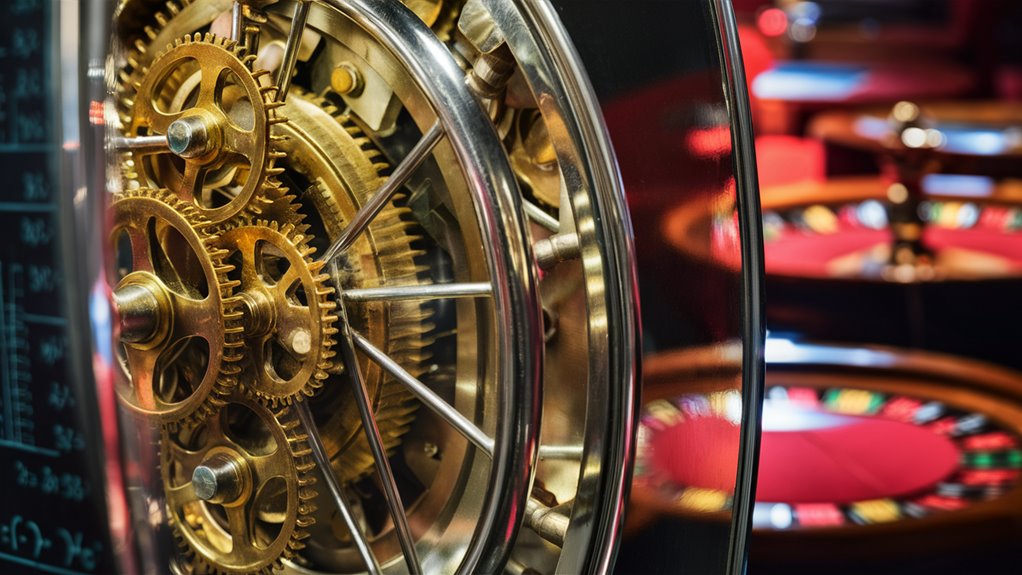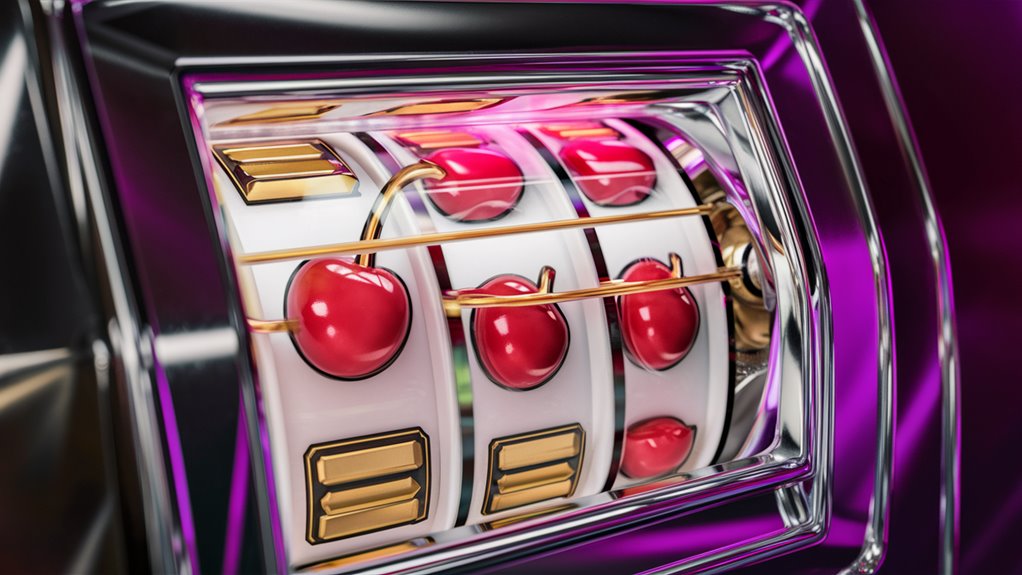How Casino Games Are Made: Keeping Players Hooked

Game Math Basics
Today’s casino games, with brain science and sharp math, are made from exact win odds – blackjack keeps a tiny edge (0.5-2%) through planned odds, while slot machines use detailed number systems and tables to place symbols and time the payouts. 온카스터디
Tricks with Senses and Minds
The casino air tries to pull you in. Loud win sounds set just so (80-85 dB), and fast light flashes keep you sharp, flashing 4-6 times a second. Games are set at a comfy 15-degrees, easy to see.
Games and Rewards
Training minds is key in game design. Games keep your brain busy with hit and miss times. These smart setups, with rewards at random, make you keep playing.
Mixing math, senses, and brain tricks makes the fun last, but still in control. Each part is well-thought to keep you playing as the house stays winning.
Brain Tricks in Gaming
Brain tricks are core to casino game design.
Mind forming, from early studies, uses random payouts to keep you deep in the game.
This plan works in both new and old casino games.
Clever Near-Wins
Almost-wins stir up a key brain spot in games.
These tight plays excite your brain nearly as real wins do.
Slot programs make you think you just missed a big win, driving you to keep trying.
Math and Player Feelings
Game math blends deep brain tricks with losses and wins (LDWs).
These tricks give small rewards, have loud win sounds, and trick your mind into feeling like you won, even if you didn’t hit big.
Sensory tools – smart lights and sounds – push these brain tricks, urging you to play more and help the casino do well.
Key Design Elements
- Payout cycles that change win rates
- Brain hooks set off by brain signals
- Smart use of sights and sounds
- Brain loops for steady play
- Keeping you there longer with clever methods
The Edge with Near-Wins
The Draw of Almost Wins in Games
Smart Pattern Plans
The top near-miss methods often use a 45-degree line, gripping you while following strict game rules. This angle makes games seem close and boosts your thrill.
The Math Behind It All
Reel designs use deep weight systems to decide where symbols land.
- Even play plans
- Sticking to rules
- Fair chances
- More fun
Rules and Fair Play
Game makers stick to strict rules with almost-wins. These methods are checked to confirm:
- Math is right
- Number systems are random
- Games are fair
- Players are safe
Mixing clever play and fairness creates a fun game that fits fun aims and strict rules.
Prize Ideas and How Players Act
Learning Reward Ideas in Game Brain Science

The Science of Mixed Win Ideas
Mind science and tight math come together in setting prize plans in casino games.
Mixed win schemes, giving prizes at unknown times, pull you in deep with well-set math.
Slot Tech Today and Pay Patterns
Today’s slot tech uses deep math to hold certain pay rates while mixing prize times.
A machine paying back 95% can give wins:
- Small wins: Every few tries
- Mid wins: Every few dozen tries
- Big wins: Every few hundred tries
Balance in Prizes and Keeping You Playing
The idea of prize balance finds the right mix between how often and how much you win.
This math plan follows a set curve, mixing:
- Often small wins
- Mid-level prizes
- Big win dreams
Controlled Math Plans
Top game setups keep tight math control while making randomness for players.
This math balance makes sure:
- The house keeps its edge
- Prizes are given right
- You see chances in your favor
- Play stays good for profit over time
Mixing mind tricks with strict math leads to top prize systems that please players and keep games working well.
Building Math House Edges
How Casinos Win with Math
The Key Math of House Edges
Math laws form the edge each casino has, making sure they gain while you keep playing.
These strict counts and paying plans are the base of how casino games work.
Details on Each Game’s Edge
Roulette Math
The house edge in roulette comes from the split between real odds and what it pays.
In a double-zero wheel, 38 spots with 35-to-1 pay on one bet makes a 5.26% house edge.
Blackjack Odds Work
Blackjack’s edge comes from two main parts: the dealer going last and the rules.
These parts mix to make house edges from 0.5% to 2%, changing with table settings and game flow.
Advanced Slot Math
Slot formulas are deep math setups with many parts:
- Right hit rates
- Figuring game ups and downs
- Return-to-player (RTP) rates
Modern slots use random number systems and planned chance tables, with typical RTPs between 85% and 98%. Melding Sweeping Freedoms With Fiery House Impact
This smart math makes sure that while you might win here and there, the big count of plays keeps the casino winning.
Tricks With Senses and All-Out Fun
Diving Into Casino Game Mind Tricks: Senses and Keeping You In
The Role of Sound in Casino Spaces
Sound work is crucial in new game design. Clever sound setups from 20-20,000 Hz hit hard on the mind, changing how long you play.
Win sounds, set just right at 80-85 decibels, make you feel deeply engaged.
